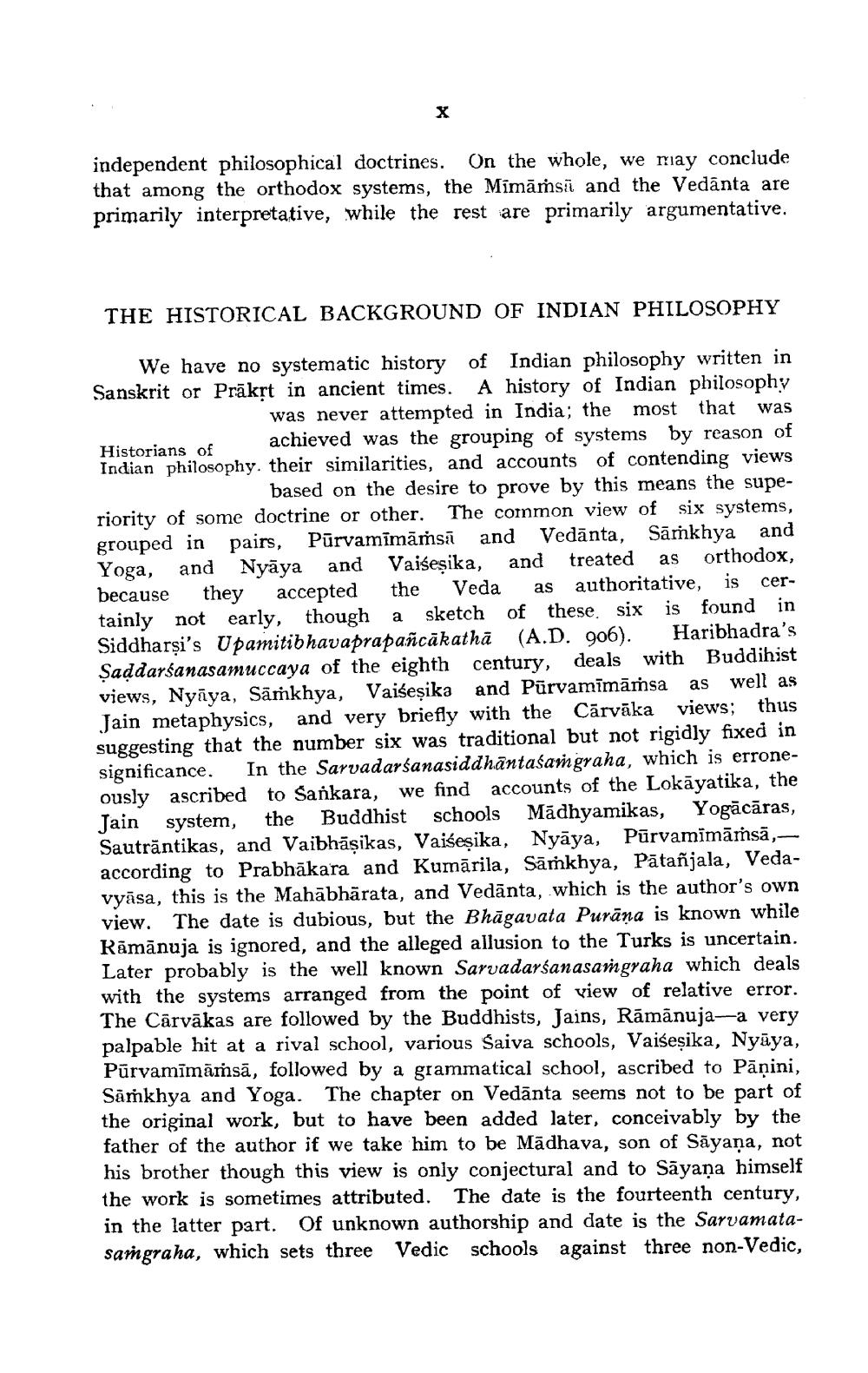________________
independent philosophical doctrines. On the whole, we may conclude that among the orthodox systems, the Mimāṁsi and the Vedānta are primarily interpretative, while the rest are primarily argumentative.
THE HISTORICAL BACKGROUND OF INDIAN PHILOSOPHY
We have no systematic history of Indian philosophy written in Sanskrit or Prākṣt in ancient times. A history of Indian philosophy
was never attempted in India; the most that was Historians of
achieved was the grouping of systems by reason of Indian philosophy, their similarities, and accounts of contending views
based on the desire to prove by this means the superiority of some doctrine or other. The common view of six systems, grouped in pairs, Pūrvamīmāṁsā and Vedānta, Sārkhya and Yoga, and Nyāya and Vaisesika, and treated as orthodox, because they accepted the Veda as authoritative, is certainly not early, though a sketch of these six is found in Siddharşi's Upamitibhavaprapancākathā (A.D. 906). Haribhadra's Saddarśanasamuccaya of the eighth century, deals with Buddihist views, Nyāya, Samkhya, Vaisesika and Pürvamīmārsa as well as Jain metaphysics, and very briefly with the Cārvāka views; thus suggesting that the number six was traditional but not rigidly fixed in significance. In the Sarvadarśanasiddhantasavgraha, which is erroneously ascribed to Sankara, we find accounts of the Lokāyatika, the Jain system, the Buddhist schools Madhyamikas, Yogācāras, Sautrāntikas, and Vaibhāşikas, Vaibesika, Nyāya, Pūrvamimārsā, according to Prabhākara and Kumārila, Sāṁkhya, Patañjala, Vedavyāsa, this is the Mahābhārata, and Vedānta, which is the author's own view. The date is dubious, but the Bhāgavata Purāna is known while Rāmānuja is ignored, and the alleged allusion to the Turks is uncertain. Later probably is the well known Sarvadarśanasavgraha which deals with the systems arranged from the point of view of relative error. The Cārvākas are followed by the Buddhists, Jains, Rāmānuja-a very palpable hit at a rival school, various Saiva schools, Vaišeşika, Nyāya, Pūrvamimāṁsā, followed by a grammatical school, ascribed to Pānini, Sāṁkhya and Yoga. The chapter on Vedānta seems not to be part of the original work, but to have been added later, conceivably by the father of the author if we take him to be Madhava, son of Sāyana, not his brother though this view is only conjectural and to Sāyana himself the work is sometimes attributed. The date is the fourteenth century, in the latter part. Of unknown authorship and date is the Sarvamatasarngraha, which sets three Vedic schools against three non-Vedic,




